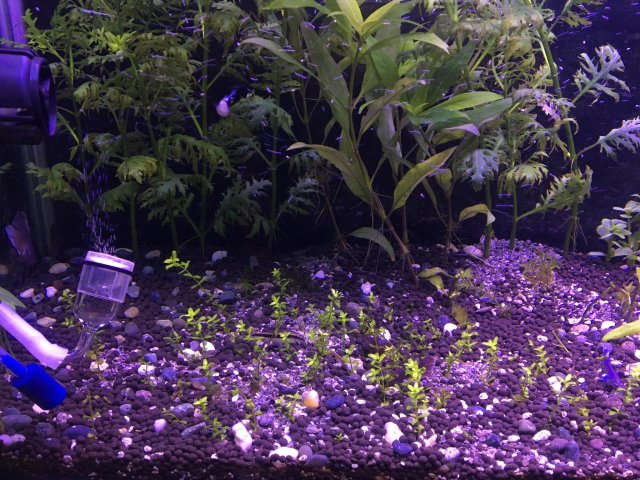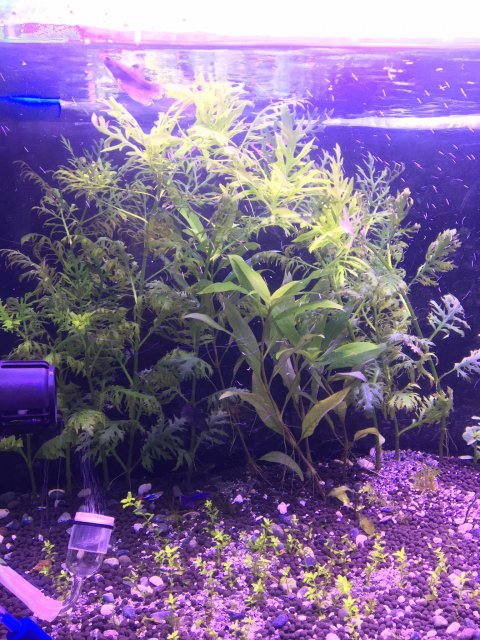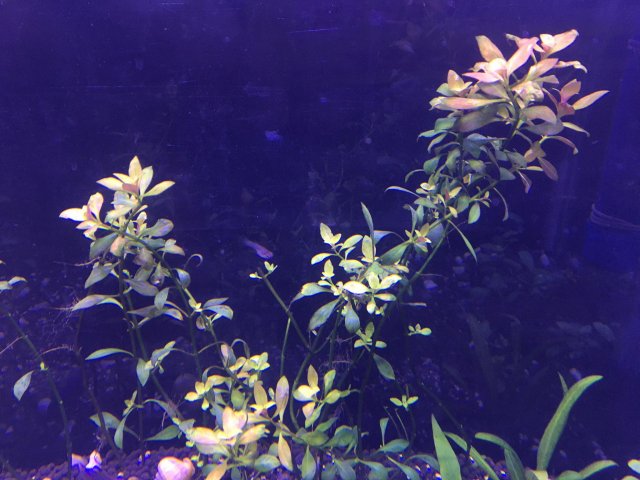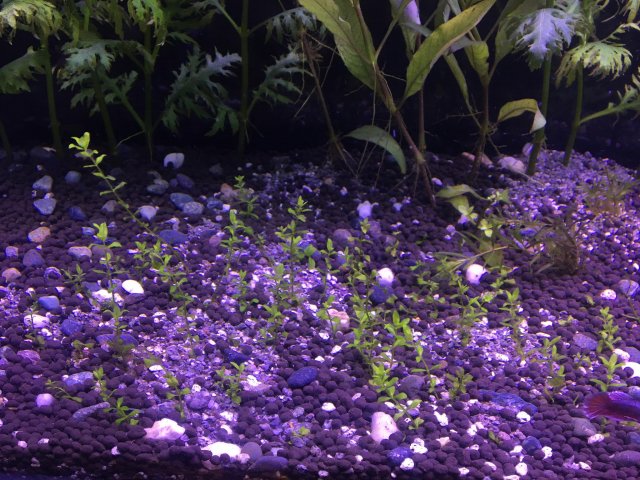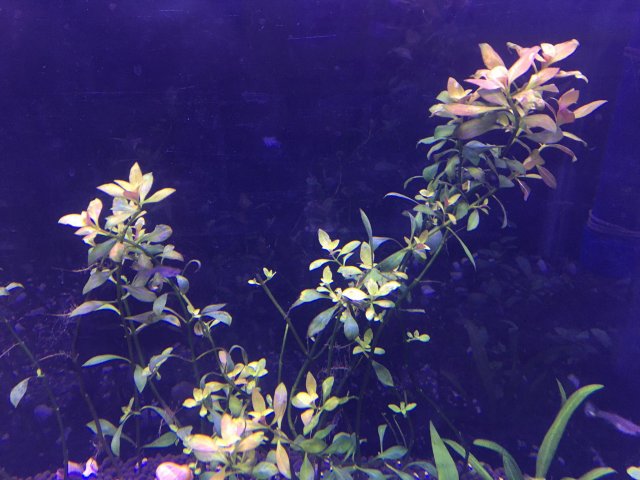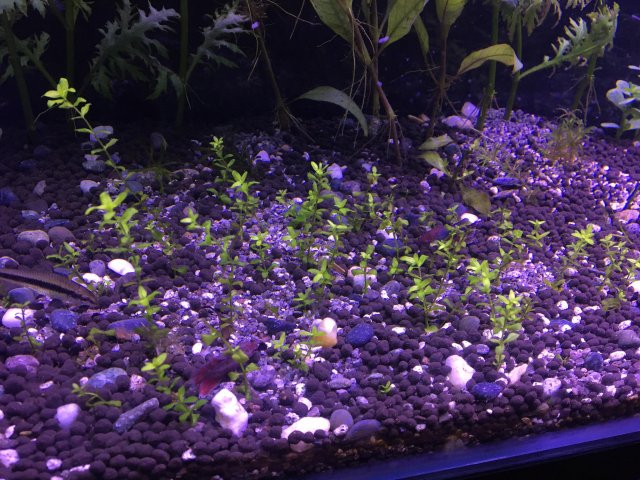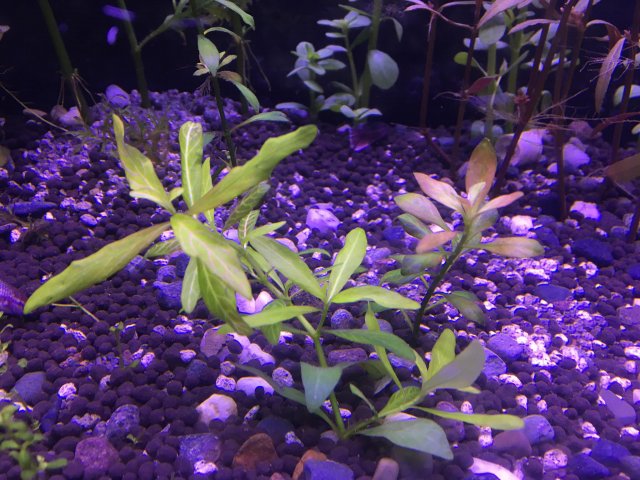Hi, so in a nutshell, almost all stem plants that I plant in my tank, are melting. Yesterday, I bought a bacopa monnieri from our local fish store (note that they sell aquatic plants that are grown submerged) along with other stem plants (though I'm not familiar with their names). I planted the plants right after I got home, and today, I found that some of the stems of bacopa are floating above the water. I noticed that the lower portion of the stems were melted, the roots were gone and the tissues of the stem were completely dissolved. The melting always starts from the bottom part of the plant, right below the substrate. The stem kinda rots and tend to be mushy. It has always been the stem that is submerged under the susbtrate.
My tank is currently on its 4th week now, and its specification is:
I am also having some minor algae issues. Algae are staring to grow on the leaves of wisterias, hygros, and anubias. There are some algae on the glass but I regularly scrape it.
The fishes are doing great, it's just the plants that I'm having problems with.
I diagnosed some issues like the yellowing of leaves, especially on newer growths , they were lacking in nutrients (mostly N), and there is a nutrient deficiency in the water coloumn since I started EI dosing just a week ago.
I also read some forums regarding melting of the stems at the lower portion of the plants particularly the part that are submerged under the substrate. Tom Barr suggested that maybe it was due to the phenomenon called autofragmentation, wherein the plants eat off their lower portion so they can float away to find a better spot where there are more nutrients, or perhaps more lights (or CO2).
Any insights, inputs, suggestions regarding the melting of the stems?
Thank you!
Regards,
Francis


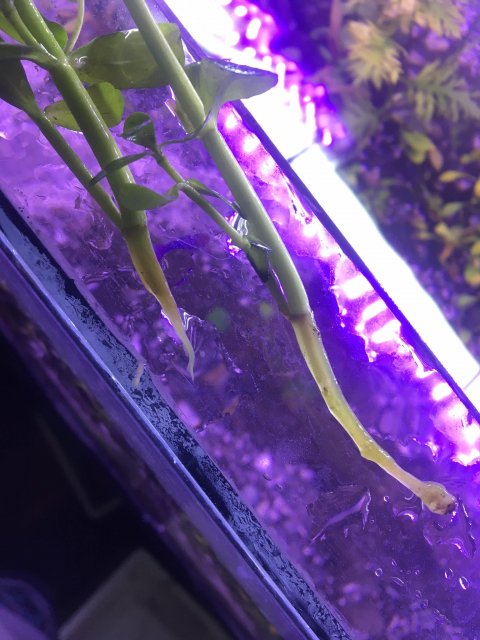


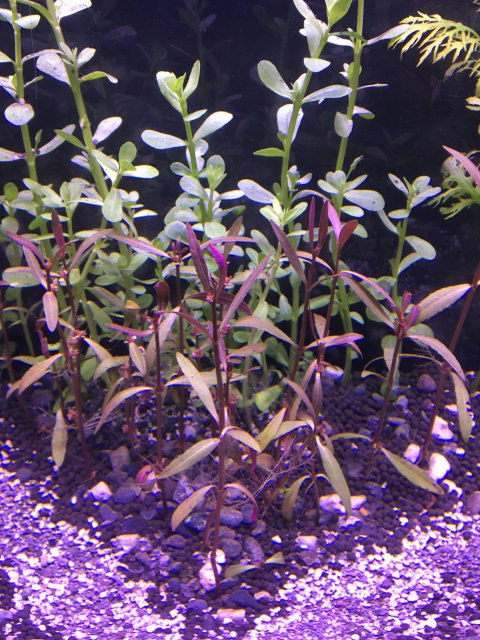
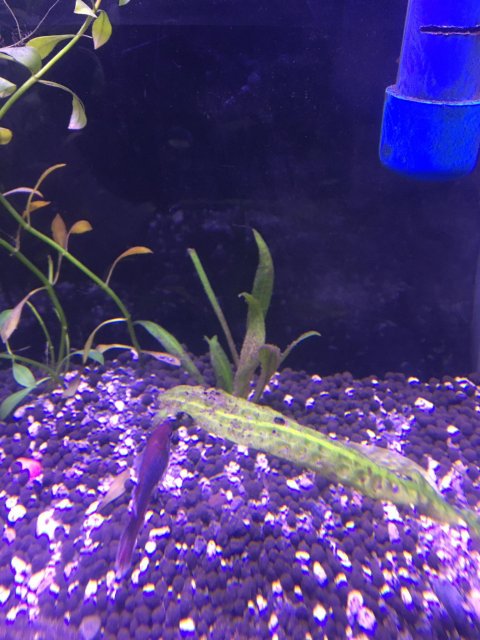

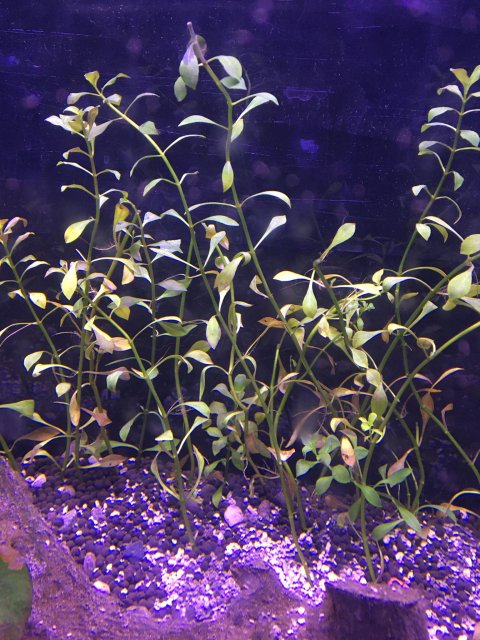
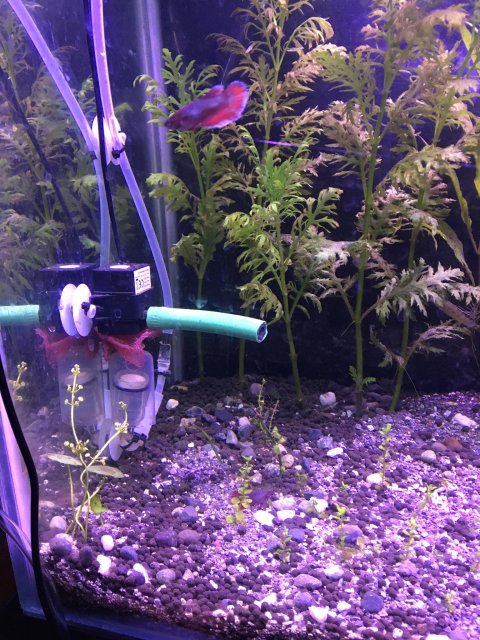



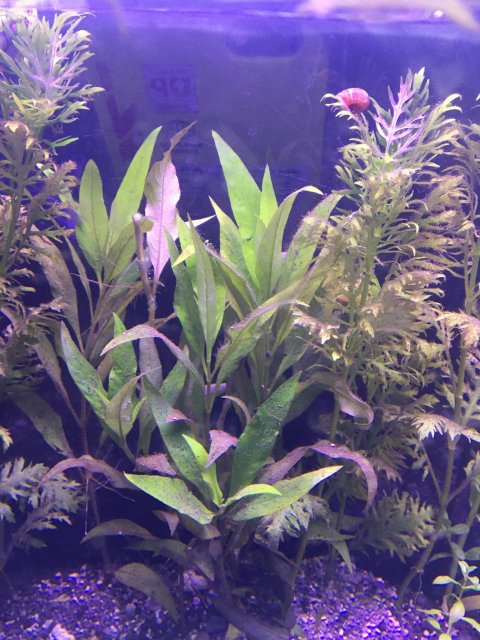
My tank is currently on its 4th week now, and its specification is:
- 40 gallon tank (120cm x 30cm x 40cm)
- ISTA Premium Aquasoil + boiled and filtered course sand gravel (substrate is about 1.5in thick or ~3.8cm thick)
- Stable room temperature (~28° C or 82 °F) since aquarium is inside our house and we live in a tropical country
- DIY external canister filter
- 14-watt 6500K LED T5 Batten Light
- 25-watt "purple" LED grow light I cheaply ordered online
- 8-hour light period
- 2bps CO2 from a DIY sugar-yeast contraption with ceramic diffuser and a mini pump right above the diffuser to act as an in-tank reactor
- pH ranging from 4.5-6 (rough estimate because I only use pH paper strips for testing pH)
- I added some root tabs
- Weekly EI dosing (but due to unavailability of Nitrate fertilizers in our area, I use ammonium phosphate and urea as substitute for N source)
- I also dose epsom salt for 10ppm/week
- I do not have test kits for gH, kH, nitrate, nitrite, and ammonia levels but I'm pretty much certain that my tank is completely cycled now.
- I do 50% water change per week.
- water wisteria
- bacopa monnieri
- pearlweed
- anubias nana petite
- amazon sword
- crypts
- h. sunset (newly planted)
- Persicaria sp. 'Porto Velho' (i think?) smartweed
- pennywort
- giant hygros (tho im not quite sure)
- ludwigia rubin
- some other plants (i do not know their names so I'll just post some pictures of them)
- a sorority of 11 female bettas
- 10 guppy juvies
- 1 SAE
- 1 catfish (i dont know what catfish he is)
- 3 mystery snails
I am also having some minor algae issues. Algae are staring to grow on the leaves of wisterias, hygros, and anubias. There are some algae on the glass but I regularly scrape it.
The fishes are doing great, it's just the plants that I'm having problems with.
I diagnosed some issues like the yellowing of leaves, especially on newer growths , they were lacking in nutrients (mostly N), and there is a nutrient deficiency in the water coloumn since I started EI dosing just a week ago.
I also read some forums regarding melting of the stems at the lower portion of the plants particularly the part that are submerged under the substrate. Tom Barr suggested that maybe it was due to the phenomenon called autofragmentation, wherein the plants eat off their lower portion so they can float away to find a better spot where there are more nutrients, or perhaps more lights (or CO2).
Any insights, inputs, suggestions regarding the melting of the stems?
Thank you!
Regards,
Francis


















